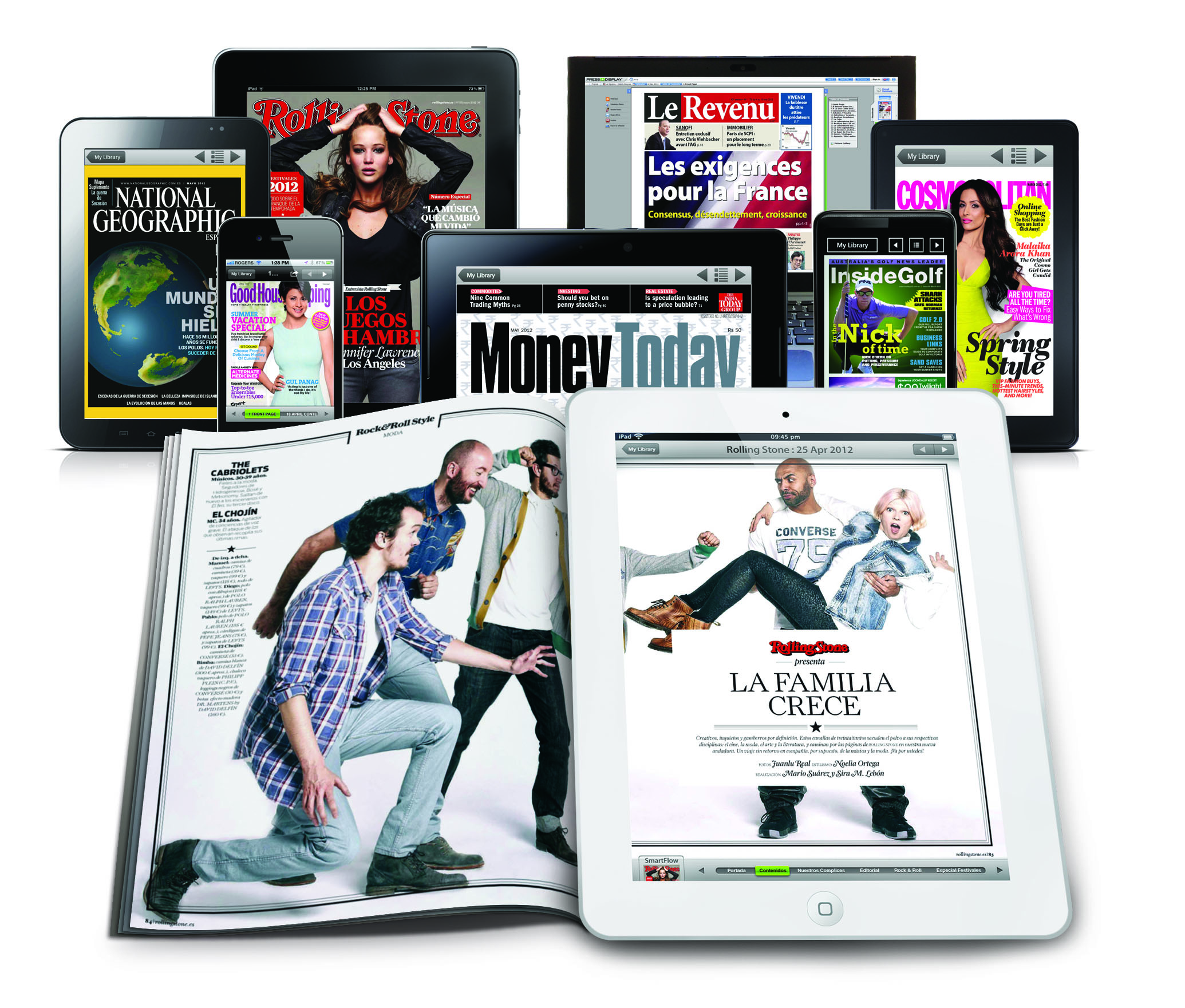
Back in the 1980’s page layout programs were part of a revolution called desktop publishing, designers and publishers could use programs such as PageMaker or QuarkXPress to set type and layouts right at their desks.
Suddenly designers had to learn new skills, not just to lay out pages and artwork but how to do this digitally, they had to learn how to use computers, how to import text and images at the correct resolution – It was the biggest change to the industry of Graphic Design that had ever been, until now that is…
InDesign – a whole new world of digital publishing…
Initially InDesign unleashed the power of the PDF, we could create documents optimised for viewing on screen, we could email proofs rather than print and post them, we could upload files to printers rather than posting out a CD or DVD. Then we began to insert hyperlinks and buttons in to our PDF’s, they had forms and videos embeddesd – things were gradually changing.
Is InDesign digital publishing the new print?
Over that last three or four years the number of print books sold has been surpassed by the number of books downloaded from sites such as Amazon and iTunes, interactive applications are coming alive, business people and the general public are all walking around with mobile devices they can read, create professional presentations and communicate with the rest of the world on.
Is InDesign leading the digital revolution?
InDesign has changed the face of digital publishing, its exciting times but the print designer has to yet again rethink and learn a whole new world, no designer can afford to ignore this, its only a matter of time that a digital version of any publication will be standard and I dont just mean clicking ‘export as PDF’.
I mean creating landscape and portrait versions of every page so ipad users can view your designs whilst sat on the bus or laying on the beach and embedding oversized images so with a pinch on the screen they can be zoomed in too.
Eporting for digital applications is becoming a large part of the design process, much like preparing a document for traditional printing, we all know if you just click ‘print’ it will never come out as you expected, you need to go through the whole document with a fine tooth-comb, checking colour values and making sure fonts are consistent.
InDesign digital publishing formats
There are many different formats for digital output from InDesign. The following are the digital formats that Graphic Designers need to learn whilst exploring the possibilities of digital publishing:
DPS – Interactive applications that can be uploaded onto devices such as the Apple iPad and Android tablets.
ePub – Documents, often long, that can be read on eReaders such as iBooks, Kindle and Nook. ePubs can also be read on computer screens using eReader software.
HTML – Code-based text and images that are posted to web pages and viewed on computers or tablets.
PDF – Page-based documents that can be downloaded from websites or distributed via email. Can be viewed on computers or tablets, but not all features are supported by all readers and devices.
SWF and FLA – Based on Adobe Flash technology, these formats can be used as interactive presentations containing motion graphics and videos.
Thinking Digitally
There are many new skills you need to learn when working with digital publications but most of all you need to think differently, mainly planning ahead, always keep in mind throughout the design process that a digital version is inevitable. Think non-linearly, books start at the beginning and finish at the end digital publications allow the reader to move off in many different directions.
Most importantly keep up with it all!
knowledge is power, embrace new software developments, be an expert and an eternal student – keep learning!
Read more about the digital publishing power of InDesign here

 Click here to see all of our Software Training Courses
Click here to see all of our Software Training Courses